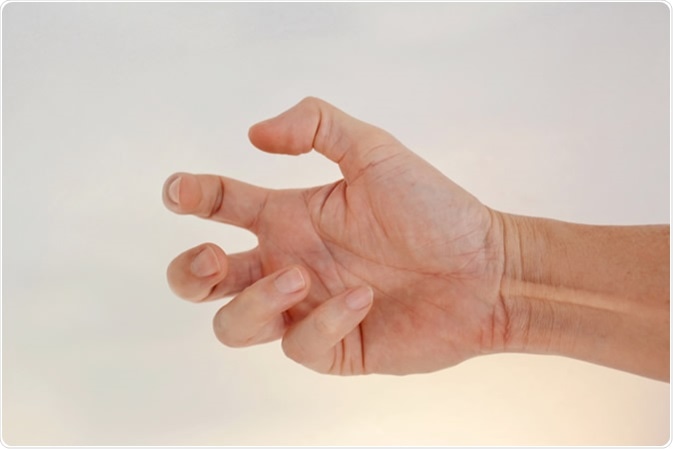What are the Symptoms of Dystonia?
The symptoms of dystonia vary depending on which form of the condition a person has and how severe it is. If the dystonia is genetic or the cause is unknown, it is termed primary dystonia, while dystonia that occurs due to an underlying disease such as stroke, encephalitis, Parkinson’s disease or head injury, is referred to as secondary dystonia.

The condition may also be referred to as early onset if symptoms start during childhood/young adulthood or late onset if they start during later adulthood or when a person is elderly.
In early onset dystonia, symptoms tend to begin in the lower limbs or arms before spreading to the upper part of the body and other limbs. In late onset dystonia, the symptoms are usually confined to the upper part of the body including the head, neck, and one or more arms.
Some of the symptoms seen with the different forms of dystonia are described below:
Generalized dystonia
This usually occursas an early onset condition. Symptoms include –
- Muscle spasms
- Abnormal and twisted postures due to spasms and contractures. For example, the foot or arm may be turned inwards.
- There may be jerky movements of the limbs and body parts
Dopa-responsive dystonia
This is a subtype of generalised dystonia that also usually has an early onset, with symptoms typically manifesting between the ages of 6 and 16 years. A common symptom is a stiff, awkward way of walking. The posture of the foot may be abnormal and the child may have spasms in their torso and arms.
Cervical dystonia
This is one of the most common forms of dystonia and is a focal form of the condition, meaning it affects only one body region. This type of dystonia affects the neck muscles. Contractions of the neck muscles cause the head and neck to be pulled about in various directions which can lead to stiffness and pain. For reasons that are not yet understood, the symptoms of cervical dystonia can often be eased by touching the neck or the back of the head.
Blepharospasm
This is a type of focal dystonia that affects the eye lid muscles. Blepharospasm leads to an inability to control eye closure, with some sufferers unable to hold their eyes open for several minutes. Other features of the condition include frequent blinking, photophobia and eye irritation. Symptoms may vary in severity throughout the day and can be triggered by stress or fatigue.
Hemifacial spasm
This is also a focal dystonia, characterized by repetitive twitching of the muscles on one side of the face around the eyes and mouth.
Laryngeal dystonia
This is also a form of focal dystonia and leads to spasms of the larynx or voice box muscles.
Oromandibular dystonia
This form of dystonia affects the muscles in the lower face, tongue or jaw. This can give rise to a distorted facial expression such as a grimace or pursing of the lips. This form of the condition can also cause difficulty swallowing or dysphagia.
Writer’s cramp
This is a focal dystonia that affects the arm and wrist of the hand that is used to write a lot. Examples of similar task-specific focal dystonias include typist’s cramp, golfer’s cramp and musician’s cramp.
Myoclonic dystonia
This is a form of segmental dystonia typically characterized by spasmic contractures of the arms, neck and trunk. It leads to jerky, spasms that resemble the movements of the body in response to an electric shock.
Sources
- http://www.nhs.uk/Conditions/Dystonia/Pages/Introduction.aspx
- www.movementdisorders.org/…/guidelines_on_dystonia.pdf
- http://www.ninds.nih.gov/disorders/dystonias/dystonia.pdf
- http://www.dystonia.org.uk/
- http://www.dystonia.us/PDF/AboutDystonia.pdf
Further Reading
- All Dystonia Content
- What is Dystonia?
- What Causes Dystonia?
- Dystonia Treatments
- Dystonia Tremors
Last Updated: Jun 19, 2019

Written by
Dr. Ananya Mandal
Dr. Ananya Mandal is a doctor by profession, lecturer by vocation and a medical writer by passion. She specialized in Clinical Pharmacology after her bachelor's (MBBS). For her, health communication is not just writing complicated reviews for professionals but making medical knowledge understandable and available to the general public as well.
Source: Read Full Article
